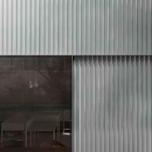
arg
Members-
Posts
29 -
Joined
-
Last visited
Personal Information
-
About Me
Embarking on major renovation of '80s house - looking to achieve Passivhaus Enerphit level of efficiency while also adding small extension, moving walls around inside, new windows etc.
-
Location
Cambridge
arg's Achievements

Member (3/5)
11
Reputation
-
I suspect that a major factor in sizing the TS was to make sure there’s room to absorb the heat from a run of the biomass. As I understand those things, you fill it with fuel and fire it up - you then get a huge load of heat out of it over the next few hours, with no way to stop it if you’ve overdone the fuel.
-
Well, strictly speaking you should have informed them after the install, but since it's such a small demand in practice it's not going to cause any trouble.
-
No, since that's only a short-duration load (like most other loads), you only need to consider it against the rating of your supply (ie. the main fuse). Of course, if you install enough of them you may need a supply upgrade and be in contact for that reason. It's only for sustained loads which fit within an existing supply but are likely to break their statistical planning that you need to notify - heatpumps, EV charging, PV generation.
-
There's two separate issues: whether your house's supply is adequate, and whether the supply to the whole neighbourhood is adequate. You may well have a 100A (23kW) supply to the house, but the distribution network will have been planned on the basis of only about 2.5kW per customer sustained capability - on the assumption that you will only use your full 100A for short periods. This forecasting makes assumptions about the kind of load - the number will be a bit higher (but not much) for estates originally built with electric storage heating rather than gas, for example. Your heatpump can be drawing 5kW+ for hours on end, which is much more of concern for the network than your electric shower which might be drawing 10kW but only for minutes at a time - hence the shower is a concern against your 100A fuse but the network operator aren't too bothered, while the heatpump fits easily within your 100A fuse but is a concern for the network operator. So when you install new equipment which changes the nature of the load in your premises, you are required to notify the network operator so that they can plan accordingly; this is almost certainly what you are being asked about. Look here under the heading "connecting electric vehicles and heat pumps": https://www.energynetworks.org/operating-the-networks/connecting-to-the-networks Depending on the circumstances (size of equipment, existing supply), this requires either that you get permission first, or that you go ahead with installation and just have to send in a form to tell them what has happened. I'm guessing from what you said that you fall into that second category - so you (or the installler) just need to fill in the form, send it to the DNO, and keep a copy for your MCS paperwork. But obviously you will need to check the numbers first.
-
Are there actually 3 separate cells? I don't know anything other than what I've read from others, but I had understood that there was a single volume of the PCM material with 3 sensors at different heights within it (and the heater at the bottom). So it would make sense, starting from cold as in your graph and hence all the PCM in solid state, that the heater initially melts a small volume of liquid that's very close to the heater. Further heat will then rapidly spread through the already-liquid part (by convection) but more slowly through the rest of it since there's a limited surface area of the frozen stuff in contact with the hot liquid and also there's a large amount of energy absorbed as the surface layer melts - think ice floating in a cup of warm-ish water. So you'd have a gradually increasing volume of hot liquid that's much warmer than the average of the whole thing, until everything has melted and you are just putting in the small amount of extra energy stored in the difference between it all being at the melting point vs all being at the max permitted temperature. I didn't think the sunamp controller (at least the original separate unit which has had photos shared) had any means of finely pulsing the elecrical supply to the heating element - it appeared to be a simple relay switching the element on and off. It could potentially pulse slowly (seconds) during the initial warm-up to avoid that small volume of liquid near the heater from exceeding the maximum permitted temperature as it takes time for heat to spread through the mostly-solid content; that should be less necessary later in the charge process as there's a larger volume of liquid and less convection. But it's possible there's also a thermostatic mechanism in the heater itself (independent of the three temperature sensors used by the controller). As above, these comments are 99% speculation, though I'd be interested in any info to confirm or deny...
-
Fan Coil Units for use with a (cooling) ASHP
arg replied to ProDave's topic in Air Source Heat Pumps (ASHP)
Here's a few UK suppliers of fan coils that I've bookmarked when I came across them - I'm still not started on my build so haven't contacted any of them yet: https://coolenergyshop.com/collections/radiators-fan-coils https://www.biddle-air.co.uk/en/products/fan-coils/deco-fan-coil-unit http://www.dunham-bush.co.uk/index.php/products/fan-coil-units/ocelot First one has prices (£195+VAT) but no data of any sort; others have data but no prices.... -
What's the issue? Help Please ?
arg replied to canalsiderenovation's topic in Air Source Heat Pumps (ASHP)
You've got replies upthread suggesting two possibilities: Take the boost output of the Mitsubishi controller and instead of just wiring it to an immersion, wire it instead to an override input on a solar diversion controller. @PeterW suggests Eddi or iBoost controllers can accept this. Ignore the Mitsubishi's legionella feature and do it all in a separate controller. @Roundtuit suggests that Apollo Gem can do both solar divert and legionella cycle in one controller. -
What's the issue? Help Please ?
arg replied to canalsiderenovation's topic in Air Source Heat Pumps (ASHP)
I think the issue is: For efficiency (or just the plain ability of the unit to do it) ASHPs for DHW are normally run with a relatively low tank temperature. The low tank temperature theoretically risks legionella growth. One way to combat this is to, at regular intervals controlled by a timer, raise the tank temperature to 60C in order to kill any legionella. Some systems just run the ASHP harder (less efficiently) to do this, but many ASHPs can't deliver the 60C+ output temperature required. Some systems have an extra resistance heater as part of the ASHP or its plumbing (effectively a willis heater with a fancy label on it!) to boost the output temperature of the ASHP, so the ASHP "system" can handle the legionella cycle. Some systems put a conventional immersion in the tank and control that to run the legionella cycle. So you need either a control system that can do both the legionella cycle and the solar divert all in one system, or else you need a dedicated immersion heater (not part of the rest of the system) to accept the solar divert. If your giant tank has room for two conventional immersion heaters, that's probably the easiest way forward from where you are. -
You are right of course.
-
As I understand it: The "heating load" is what you want. It's expressed in watts per square metre of floor area, so multiply by the floor area 11*241.9 = 2660 = 2.7kW. So a 2.7kW output heatpump, running flat-out 24x7 and with no other inefficiencies (and not running the DHW) would just be enough to maintain their assumed temperature on the coldest days. You obviously need one bigger than that. The difference between "heating demand" and "heating load" is other assumed heat inputs to the building not from the heating system: cooking, electrical appliances, warm bodies etc. So you'd need the larger "heating demand" number if for some strange reason you wanted to be sure you could keep the house fully up to temperature when you weren't living there. There's other adjustments needed to the raw: obviously you've got to add the DHW requirement; a heatpump might not actually produce its full nominal output under the conditions you want (datasheets often quote several figures for combinations of output water temperature and outdoor temperature: since the max input power is typically fixed by the size of the compressor, the output power depends on efficiency, which will be lower on cold days and lower the hotter you need the output water to achieve the heat transfer); and you probably want more than the bare minimum to hold the temperature, just in case you've let the temperature drop for some reason and want to bring it back up within a reasonable time.
-
You’ve obviously managed to get a good discount, as the list price they quote online is £2641+VAT (or £2511 without the heating element). I could almost certainly get by with 2x 9 units, but 12s give more headroom and don’t cost much more; a single 12 would be barely enough and while much cheaper complicates the plumbing in ny particular case. And the shape of the sunamps vs my house means I have loads of odd voids where a Sunamp will fit but a talk tank won’t.
-
I don't see anything in the warranty document (PDF linked at the top of this page https://www.sunamp.com/warranty/) that needs an approved installer. It does have a lot of exclusions, and you would be on the hook for any cockup/failure to follow the instructions (where you could otherwise blame the installer - but you would be trying to claim from the installer in that case, not from Sunamp). I'm tempted to have a go myself, though there's a couple of oddities in the instructions I was about to post about: Seems to require copper for the connections. Fair enough - but does a short stub of copper coming out of the case and then convert to Hep2O or similar count? Requirement to have an expansion vessel (unless you are sure that there's no NRV at the meter, and seems in any case dodgy to rely on that as someone might power it up with the stopcock shut). Again, seems to make sense, but there's no requirement for a pressure relief valve, so how do you know when the expansion vessel has lost air pressure?
-
Reason for not DIYing the last bit?
-
Are you planning to drink the softened water? I thought normal practice was to provide at least 1 tap of non-softened for drinking use.
-
Would you mind sharing who from? That's cheaper than I am looking at. (and yes, I'm also probably looking at 2x12s! Reasons in my case include: I want two units for various reasons, and although they are very expensive the delta from the 9 to the 12 isn't that great; household includes teenage daughter who expects 30min+ showers, Japanese wife who expects a bath to be full to the brim with scalding hot water per Japanese practice; I want some headroom to allow opportunistic heating from PV without risk of running out.






